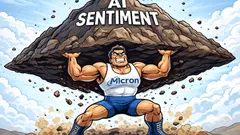AInvest Newsletter
Daily stocks & crypto headlines, free to your inbox
Federal Reserve Chair Jerome Powell returned to Capitol Hill on Tuesday for the first of two days of semiannual testimony, this time before the House Financial Services Committee. His appearance came just a week after the June FOMC meeting, and as expected, Powell largely stuck to familiar language, signaling no urgency to shift policy while acknowledging evolving risks tied to inflation, tariffs, and economic growth. The tone was cautious and measured, a clear attempt to avoid generating market volatility ahead of the Senate leg of his testimony scheduled for Wednesday.
WATCH: The $37 Trillion Lie — Rick Rule Exposes What They’re Not Telling You
In his prepared remarks, Powell reiterated that the Fed remains "well positioned for the time being to wait to learn more about likely course of economy before adjusting policy". He described the economy as, "solid despite elevated uncertainty" and confirmed that the labor market is near full employment while inflation is still "somewhat above" the 2% target. Market reaction was muted, with investors and traders finding little in the way of surprises—likely a desired outcome for the central bank at this stage.
During the Q&A, Powell faced bipartisan attempts to pull him into political debates, especially around fiscal policy and tariffs. He sidestepped these overtures, maintaining the Fed's longstanding posture of neutrality, and instead emphasized the importance of keeping inflation expectations anchored. "Our obligation is to prevent a one-time increase in the price level from becoming an ongoing inflation problem by keeping inflation expectations well anchored", Powell said.
On the question of rate cuts, Powell did not explicitly rule out a move in July, saying: "If it turns out that inflation pressures do remain contained, then we will get to a place where we cut rates sooner rather than later, but I wouldn't point to a particular meeting". He added that, "we're in a watch and wait mode," suggesting flexibility depending on how inflation and labor market data evolve over the summer.
Powell addressed the topic of tariffs repeatedly, noting that increased tariffs are "likely to push up on inflation and weigh on economic activity". He said he expects their impact to begin showing up in consumer prices and inflation readings in June, July, and August, but also emphasized uncertainty around the magnitude of that pass-through. "We don't know how much that's going to be passed through to consumers", he noted, and added that "if it turns out inflation is not passed on as expected, it will matter for our policy."
The Fed Chair struck a cautiously optimistic tone on inflation, saying the "overall inflation picture is positive," while simultaneously warning that "forecasts in and out of the Fed expect a meaningful increase in inflation this year due to tariff policy." This tension—between backward-looking data that might justify a rate cut and forward-looking models warning of upside risks—is what Powell pointed to as the reason for policy inertia. "If not for forecast of inflation, we would have continued cutting," he told lawmakers. "We're just noting, let's wait and see more. It's a question of being prudent and careful."
Powell acknowledged that in retrospect, current conditions might justify a neutral policy stance. "If you look in the rearview mirror and look at existing data that we've seen, you can make a good argument that would call for us to be at a neutral level, " he said. "That would require the Fed to have made a couple of cuts, or maybe more."
However, he reiterated that the FOMC had not moved in that direction because of "uncertainty about the size and potential persistence of inflation from tariffs," which he cited as a key reason for remaining on hold.
Powell also addressed broader economic conditions, saying the U.S. is not in a recession and that financial stability risks are not elevated. "Asset prices are high, but leverage is not particularly high," and "overall financial stability conditions are not in a place where we worry a lot," he said. He added that commercial real estate is "not getting worse" and the sector is "working our way through it."
Comments on the labor market were largely positive, with Powell noting that "we don't see weakness in the labor market," although he indicated that any unexpected deterioration in employment would prompt a reassessment. "If we forecast labor market weakness, we would change things."
Finally, Powell touched on data integrity and the broader role of the Fed, cautioning that "less reliable, more volatile data would make it more difficult for the private sector and the Fed". He repeated that the Fed does not comment on or intervene in fiscal policy, including taxation or climate policy, and reiterated the central bank has no intention to purchase Bitcoin or similar assets.
In sum, Powell struck a balance between caution and preparedness. His messaging was clear: the Fed is on hold, watching inflation data closely, and wary of the impacts of tariffs, but it remains open to cutting rates if inflation remains subdued and the labor market softens. With no major market moves or policy missteps from today's appearance, Powell likely achieved what he set out to do—keep the Fed steady and the political heat at arm's length for another day.
Senior Analyst and trader with 20+ years experience with in-depth market coverage, economic trends, industry research, stock analysis, and investment ideas.

Dec.19 2025

Dec.18 2025

Dec.18 2025

Dec.18 2025

Dec.18 2025
Daily stocks & crypto headlines, free to your inbox
Comments
No comments yet